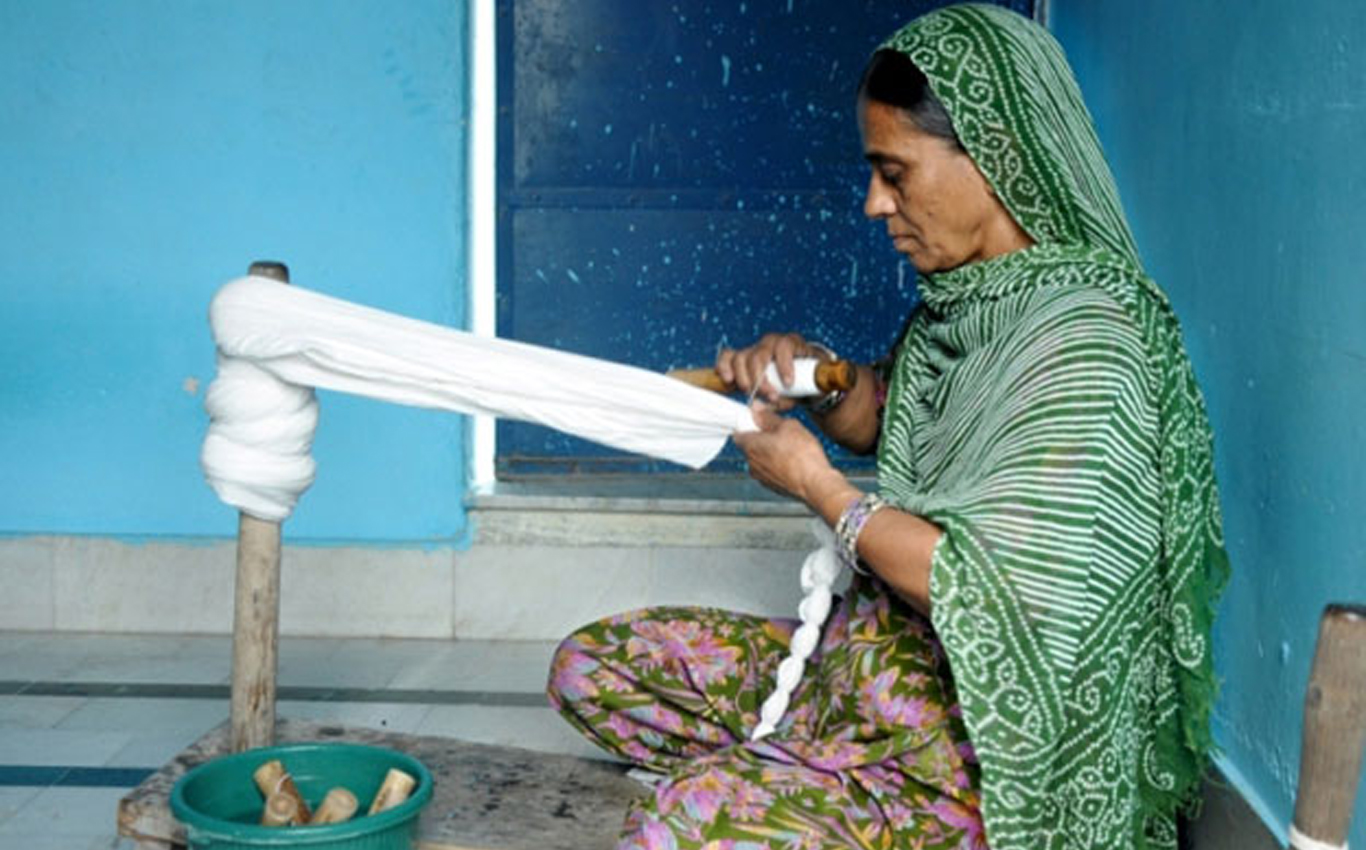Home / Our Artisans / Shibori Dyeing: The Japanese Art of Resist Dyeing..

Shibori is the Japanese term for tying & dyeing cloth in a special way. The art dates back to 8th century. It involves binding certain sections of cloth before dyeing, so as to achieve desired patterns. Artisans can creatively bind, clamp, stitch, fold, twist, pleat or compress cloth for shibori. Each technique results in very different patterns. Traditional shibori requires the use of thread for binding. The pattern achieved depends on how tightly the cloth is bound and where the cloth is bound. Raw materials used in this process are locally sourced cotton fabrics and non-toxic dyes. Indigo is still the most preferred dye & color for shibori. Most patterns are geometric due to the nature of binding techniques.
Our artisans are located in the dry desert climate of western Rajasthan, India. Being desert region, people depend on crafts, tourism and mining for their livelihoods. The shibori art form has been passed down through generations. This small group of artisans works in their in-house workshops. Women do the binding & tying and work from within their homes. Men do the dyeing work.
SETU has helped their craft to evolve to international level. We have also made their processes more environmentally sustainable by sponsoring solar water heaters of heavy capacity. They now heat the water for dyeing by using solar energy instead of non-replenishable resources.
Pl scroll below to check the products made by these artisans.